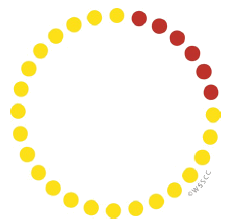Menstrual hygiene management education – the earlier, the better
Menarche, the first period, is a fundamental part of a girl’s transition from childhood to adolescence. Studies show that girls in many countries experience menarche with insufficient information and support. Girls from around the world report feeling ashamed and afraid. The potential health effects of such experiences include a weakening of girls’ sense of self-confidence, which in turn may compromise girls’ abilities to assert themselves in different situations, including their sexuality and sexual and reproductive health.6

“Menstruating women and girls are forced into seclusion, suffer reduced mobility and dietary restrictions, and can be prevented, through cultural norms, from participating in daily activities. Despite, or perhaps because of this, menstrual hygiene has been routinely ignored by professionals in the water sector, and in the health and education sectors too.”
Catarina de Albuquerque, former Special Rapporteur on the Human Right to Safe Drinking Water and Sanitation
Since 2012, the Water Supply and Sanitation Collaborative Council (WSSCC) has used a holistic methodology on Menstrual Hygiene Management (MHM) to ensure that women and girls have access to information about the biological processes surrounding menstruation, as well as hygienic methods for managing their periods, so that they can make informed choices. WSSCC’s methodology aims to provide information on puberty and menstruation as early as possible before puberty begins.
Asha, an 11-year-old girl from Assam, India shared her menstruation experiences and difficulties during a recent training session. She spoke not only about the lack of information and confusion when she had her first period, but how her daily life changed during each menstruation.

– Sometimes I stay away from school as it is too difficult to sit through classes all day without proper places to change and wash without my classmates and teachers knowing that I have my period, she said.
Asha and other girls participating in the session received information on the menstrual cycle from WSSCC trainers who are specialized in dispelling myths and taboos in a cultural context. Trainers also share a comprehensive visual guide entitled “As We Grow”, which reinforces positive messages and describes physical and emotional changes for both boys and girls going through puberty. In addition to women-only discussions to ensure a safe environment for open discussion, the methodology also includes complementary training specifically targeted at boys and men.
There are three critical steps to ensuring safe MHM:
- Breaking the silence. Understanding that menstruation is a fact of life, and a distinct biological female attribute that girls and women should be proud of, not ashamed by. Girls are encouraged to talk and discuss in an informed and positive manner to prepare them emotionally and physically for menarche and recurring monthly menstrual periods thereafter.
- Managing menstruation hygienically and safely. Ensuring adequate water, cleansing and washing materials and private spaces for managing menstrual flows hygienically and privately, managing pain and/or any related issues with dignity, in the home and in public spaces.
- Safe reuse and disposal. Ensuring mechanisms for safe reuse, collection and disposal of menstrual waste with dignity in an environmentally safe manner.

Menstrual hygiene management bracelet
To support and reinforce its work on menstrual hygiene WSSCC has developed a Menstrual Hygiene Management Ring in collaboration with the Indian designer Lakshmi Murthy. The illustration appears in reports and communications, and is also used as an advocacy bracelet in trainings with women and girls. Its beads and colors represent the menstruation cycle. The ring helps to emphasize that menstruation is something to be proud of each month and something to be discussed, not ignored.
During the MHM trainings, women and girls make the bracelets themselves according to their individual menstrual cycle, and then wear the bracelets while taking a pledge to speak about menstruation inside and outside of the home in order to break taboos. The bracelet has been worn by women and men, including government officials, champions and activists from China, Finland, India, Kenya, The Netherlands, Niger, Portugal, Senegal, South Africa, Spain, Sweden, Tanzania, and the United States as champions for raising awareness for the importance of MHM and drive change.
6 M. Sommer, C. Sutherland & V. Chandra-Mouli, ‘Putting menarche and girls into the global population health agenda’, Reproductive Health, vol. 12, no. 24, 2015.